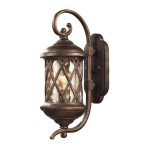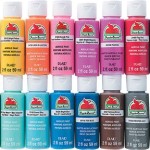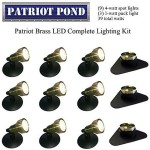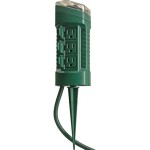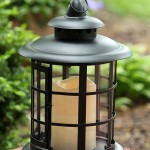```html
Outdoor Portable Lights: A Comprehensive Guide
Outdoor portable lights are essential tools for a variety of activities, ranging from camping and hiking to emergency preparedness and backyard entertaining. Their versatility and convenience make them indispensable for anyone who spends time outdoors, especially after dark. Choosing the right outdoor portable light requires careful consideration of various factors, including light output, battery life, durability, portability, and specific application.
This article provides a comprehensive overview of outdoor portable lights, examining different types, key features, and selection criteria to help individuals make informed decisions when purchasing one for their needs. The article will also cover maintenance and safety aspects to ensure optimal performance and longevity of the chosen light source.
Understanding Different Types of Outdoor Portable Lights
The market offers a plethora of outdoor portable lights, each designed with specific use cases in mind. Understanding the different types available is crucial for selecting the most appropriate option.
Flashlights: These are perhaps the most common type of portable light. Flashlights are typically handheld and powered by batteries (disposable or rechargeable) or, in some cases, hand-crank mechanisms. They are available in a wide range of sizes, light output levels (measured in lumens), and beam patterns (spot or flood). Tactical flashlights, often used by law enforcement and military personnel, feature rugged construction, high lumen output, and specialized features like strobe modes for disorienting potential threats. Smaller, everyday carry (EDC) flashlights are designed for convenience and portability, often clipping onto a belt or keychain.
Headlamps: Headlamps are worn on the head, providing hands-free illumination. This makes them ideal for activities such as hiking, camping, climbing, and trail running, where the user needs both hands free for other tasks. Headlamps typically utilize LED technology for efficient power consumption and long battery life. Features often include adjustable brightness levels, beam angles, and red-light modes for preserving night vision. Some headlamps offer rechargeable batteries and waterproof or water-resistant construction.
Lanterns: Lanterns provide ambient lighting, illuminating a larger area than flashlights or headlamps. They are commonly used in campsites, patios, and during power outages. Lanterns can be powered by batteries, propane, or solar energy. Battery-powered LED lanterns are the most popular due to their convenience, safety, and long runtime. Propane lanterns offer a brighter light output but require fuel and produce heat, making them less suitable for enclosed spaces. Solar lanterns are environmentally friendly and require no batteries, but their performance is dependent on sunlight exposure.
String Lights: While often associated with decorative purposes, string lights can be practical for illuminating outdoor spaces. Battery-powered or solar-powered string lights are easily portable and can be used to create a festive or relaxing atmosphere in a campsite, backyard, or patio. LED string lights are energy-efficient and offer a long lifespan.
Spotlights: Spotlights are designed to project a focused beam of light over long distances. They are often used for search and rescue operations, security patrols, and illuminating distant objects. Spotlights typically feature high lumen output and powerful reflectors or lenses to concentrate the light beam. They are generally larger and heavier than flashlights, but some compact models are available for portable use.
Key Features to Consider When Selecting an Outdoor Portable Light
Choosing the right outdoor portable light involves evaluating several key features to ensure it meets the specific requirements of the intended use. These features include light output, battery life, durability, and portability.
Light Output (Lumens): Lumens measure the total amount of visible light emitted by a light source. A higher lumen rating indicates a brighter light. The required light output depends on the application. For general camping tasks, a few hundred lumens may suffice, while search and rescue operations might require thousands of lumens. It is important to consider the beam pattern as well. A wide flood beam is useful for illuminating a large area, while a focused spot beam is better for long-distance viewing.
Battery Life: Battery life is a critical factor, especially for extended outdoor activities. The battery life depends on the light output setting, battery type, and technology used. LED lights are generally more energy-efficient than traditional incandescent or halogen bulbs. Rechargeable batteries (lithium-ion, NiMH) offer a cost-effective and environmentally friendly alternative to disposable batteries. Consider the charging time and availability of charging options (e.g., USB, solar) when selecting a light with rechargeable batteries.
Durability: Outdoor environments can be harsh, so durability is an important consideration. Look for lights made from robust materials such as aluminum, polycarbonate, or impact-resistant plastics. Water resistance or waterproofing is essential for protecting the light from rain, splashes, or submersion. The Ingress Protection (IP) rating indicates the level of protection against dust and water. For example, an IP67 rating means the light is dust-tight and can withstand immersion in water up to 1 meter for 30 minutes.
Portability: The size and weight of the light are important factors, especially for backpacking and hiking. Smaller, lighter lights are easier to carry and less likely to cause fatigue. Consider the overall dimensions and weight of the light, as well as any included accessories (e.g., carrying case, lanyard). Headlamps are inherently portable due to their hands-free design, while lanterns and spotlights can be bulkier and require more space.
Beam Pattern: The shape and intensity of the light beam can significantly impact performance. A spotlight concentrates the light into a narrow beam, ideal for long-distance illumination. A floodlight distributes the light over a wider area, providing broader coverage. Some lights offer adjustable beam patterns, allowing the user to switch between spot and flood modes as needed. Understanding the intended use will help determine the most appropriate beam pattern.
Light Modes: Many outdoor portable lights offer multiple light modes, such as high, medium, low, and strobe. Lower light settings extend battery life, while higher settings provide maximum illumination. A strobe mode can be useful for signaling in emergencies. Red-light modes preserve night vision and are less likely to attract insects. Consider the availability and functionality of different light modes when selecting a light.
Maintenance and Safety Considerations
Proper maintenance and safe usage are essential for prolonging the lifespan and ensuring the optimal performance of outdoor portable lights. Neglecting these aspects can lead to reduced light output, battery failure, or even safety hazards.
Battery Care: For lights that use disposable batteries, it is crucial to use the correct type and voltage specified by the manufacturer. Remove the batteries when the light is not in use for extended periods to prevent corrosion and leakage. For lights with rechargeable batteries, follow the manufacturer's instructions for charging and storage. Avoid overcharging or discharging the batteries, as this can reduce their lifespan. Store batteries in a cool, dry place, away from extreme temperatures.
Cleaning and Storage: Regularly clean the lens and reflector of the light to remove dirt, dust, and fingerprints. Use a soft cloth and mild detergent if necessary. Avoid using abrasive cleaners, as they can scratch the lens. Store the light in a dry place, away from direct sunlight and extreme temperatures. If the light is not used frequently, check the batteries periodically and replace them if necessary.
Water Resistance: Even if a light is rated as water-resistant or waterproof, it is important to avoid prolonged exposure to water. After using the light in wet conditions, dry it thoroughly before storing it. Check the seals and O-rings regularly and replace them if they are damaged. Follow the manufacturer's instructions for maintaining the water resistance of the light.
Safety Precautions: Never look directly into the light beam, as this can damage your eyes. Be mindful of the surroundings when using high-intensity lights, as they can disorient or startle other people or animals. Use caution when using lights with strobe modes, as they can trigger seizures in people with photosensitive epilepsy. Dispose of batteries properly according to local regulations. Do not attempt to repair or modify the light yourself, as this can void the warranty and potentially create a safety hazard.
Choosing the Right Light for the Task: Always select a light that is appropriate for the intended use. A small flashlight might be sufficient for walking around a campsite, but a headlamp is more suitable for hiking or climbing. Consider the environmental conditions and potential hazards when selecting a light. For example, a waterproof light is essential for activities near water, while a high-lumen light is necessary for search and rescue operations.
By understanding the different types of outdoor portable lights, considering the key features, and following proper maintenance and safety guidelines, individuals can select the most appropriate light for their needs and ensure its safe and effective use in various outdoor settings.
```
5 Portable Lamps To Light Up Any Space Azure

Portable Lights Outdoor Latzio

Bud Ball Portable Light Outdoor Lighting

The Ultimate Portable Lighting Source For Outdoor Events Company

16 Of The Best Portable Lamps For Indoor Outdoor Use These Four Walls

Portable Lantern Outdoor Table Lamp With Solar Panel In 2024 Lamps Lanterns

Danish Portable Indoor Outdoor Lights 2 Sizes 5 Accessories Creative Lighting Solutions

Ping For Portable Lamps The New York Times

Dome Outdoor Portable Lamp Verlichting Buitenverlichting Buiten Verlichtingsarn

Pearl Bluetooth Indoor Outdoor Led Lamp By Smart Green Sg Smg60935
Related Posts
